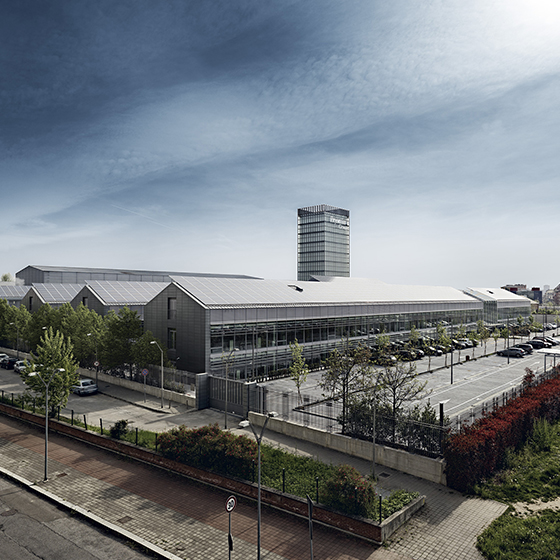Environmental Performance
Reducing energy consumption
Toggle DetailsThe issue of energy consumption is a key part of our effort to protect the environment and safeguard the planet, and has always been a crucial monitoring and leverage area for Prysmian Group. Prysmian is committed to manage and optimize its energy consumption, by means of a systematic and documented system aiming at the continuous improvement of the energy efficiency, both at operational level and at organizational level.
Greenhouse gas emissions
Toggle DetailsAs first step to reduce the GHG emissions from both our production processes and energy use, we quantify them.
Furthermore, since 2011 we participate in the CDP (ex Carbon Disclosure Project), an international initiative aiming to help meet the Kyoto Protocol's targets for worldwide reduction in greenhouse gases.
Furthermore, since 2011 we participate in the CDP (ex Carbon Disclosure Project), an international initiative aiming to help meet the Kyoto Protocol's targets for worldwide reduction in greenhouse gases.
Reducing water consumption
Toggle DetailsWater is important in our manufacturing process since large volumes are needed for cooling in the various production cycles. Over the years, we have reached an optimal use of water through recirculating systems in most of the sites and we continue our efforts and initiatives aimed at reducing water consumption in several countries across the Globe.
Reducing hazardous and non-hazardous waste
Toggle DetailsWaste reduction is an important step towards a more sustainable factory; decreasing the generation of waste lowers cost of disposal and reduces waste storage areas. Our efforts to reduce waste production continues over the years.
Recycling waste
Toggle DetailsWhenever waste is unavoidable, finding the best recycling solution helps to stay cost competitive and efficient. In most of the cases, we send wastes to external authorized companies for treatment and reuse/recycle, allowing for a reduction of the quantity of waste being sent to landfills, or to incineration.
What We’re Doing to Reach our Targets
Re-lamping with LED and smart metering.
Toggle DetailsThe Group continued to replace existing lighting with low-consumption LED lamps in 2019, and introduced systems to measure energy consumption.
In particular, between 2017 and 2018 we launched a project for the installation of LED lighting systems in eleven operating units located in Italy and the UK. The LED project was already completed and tested in ten of the eleven units, and by mid-2020 the installation and testing of the new lighting systems are planned to be completed in the last British unit. IN 2019, the RE-Lamping with LED project was also started in two additional Asean sites, to be completed by 2020.
Energy consumption measurement systems – already installed in some Countries, are planned to be installed in all the Group operating units, starting in 2020.
In particular, between 2017 and 2018 we launched a project for the installation of LED lighting systems in eleven operating units located in Italy and the UK. The LED project was already completed and tested in ten of the eleven units, and by mid-2020 the installation and testing of the new lighting systems are planned to be completed in the last British unit. IN 2019, the RE-Lamping with LED project was also started in two additional Asean sites, to be completed by 2020.
Energy consumption measurement systems – already installed in some Countries, are planned to be installed in all the Group operating units, starting in 2020.
Prysmian Group continues to participate in various working parties and associations, including Europacable, Orgalime, ANIE and AICE, and the IEC Maintenance Team that is drafting the standard environmental declaration for power cables. This approach represents an opportunity for the Group to contribute to the development and implementation of a common and recognized environmental impact analysis of power cables at world level.
Calculating the Carbon Footprint for Individual Cables
Toggle DetailsIn 2019, the Group added new functionality to its Common Analysis cable design platform, to allow for the calculation of the carbon footprint and recycling potential of individual cables. Each cable now has an “Eco Data” sheet that provides customers with information about recyclability and carbon footprint from materials production up in the supply chain and cable assembly processt. This new functionality is being extended to the General Cable area.
Energy Efficiency Projects
Toggle DetailsThe Group has selected some pilot projects in 2019 with the aim to implement and gradually test in four operating units in three countries, new solutions in the areas of: air compressed systems; heating; cooling; engine efficiency, and self-production of electricity.
The aim is to test and select the energy efficiency projects and/or initiatives which can be extended at Group level in the next years, to meet the Prysmian Group goals on energy consumption and GHG emissions.
The aim is to test and select the energy efficiency projects and/or initiatives which can be extended at Group level in the next years, to meet the Prysmian Group goals on energy consumption and GHG emissions.





